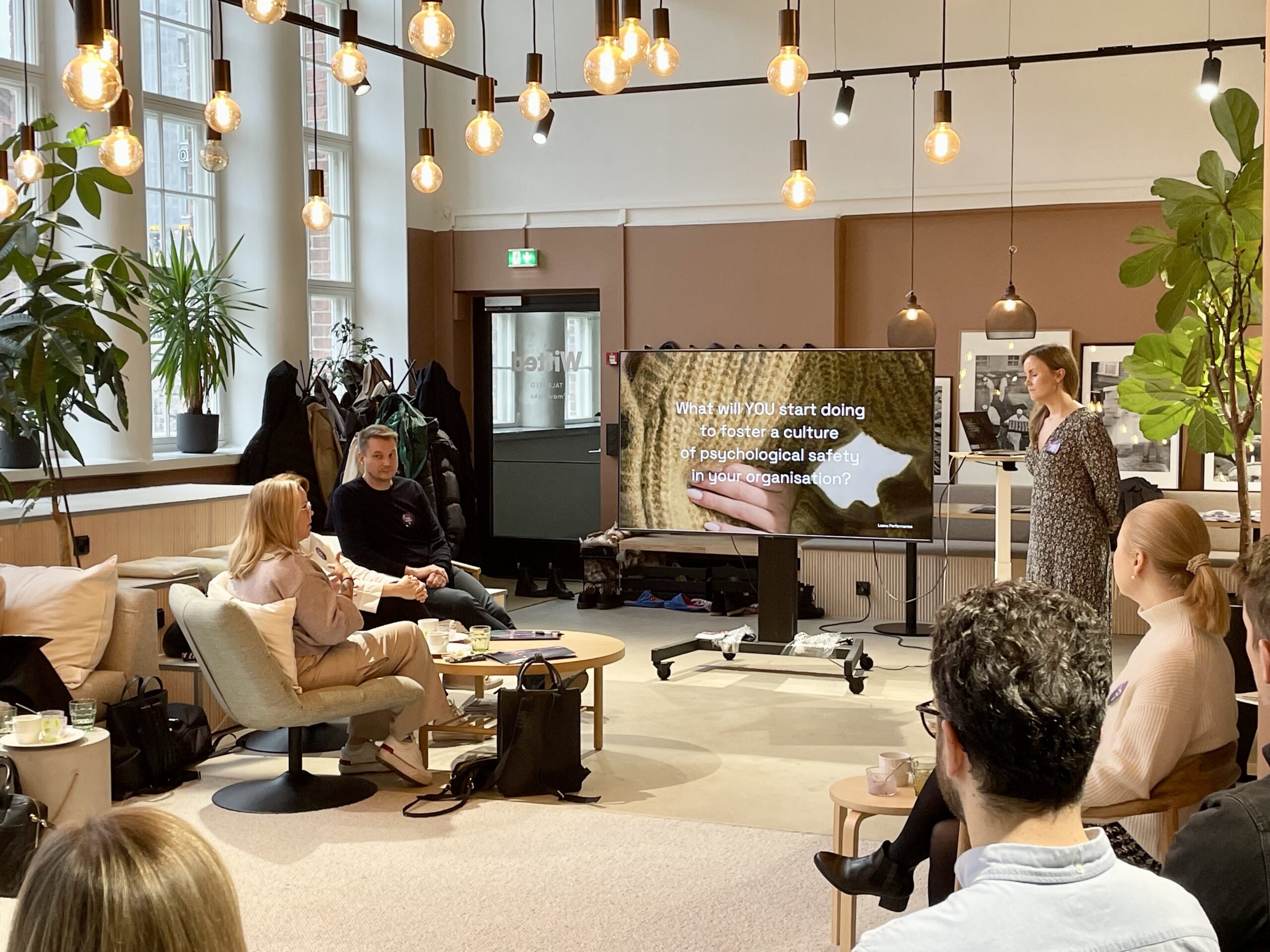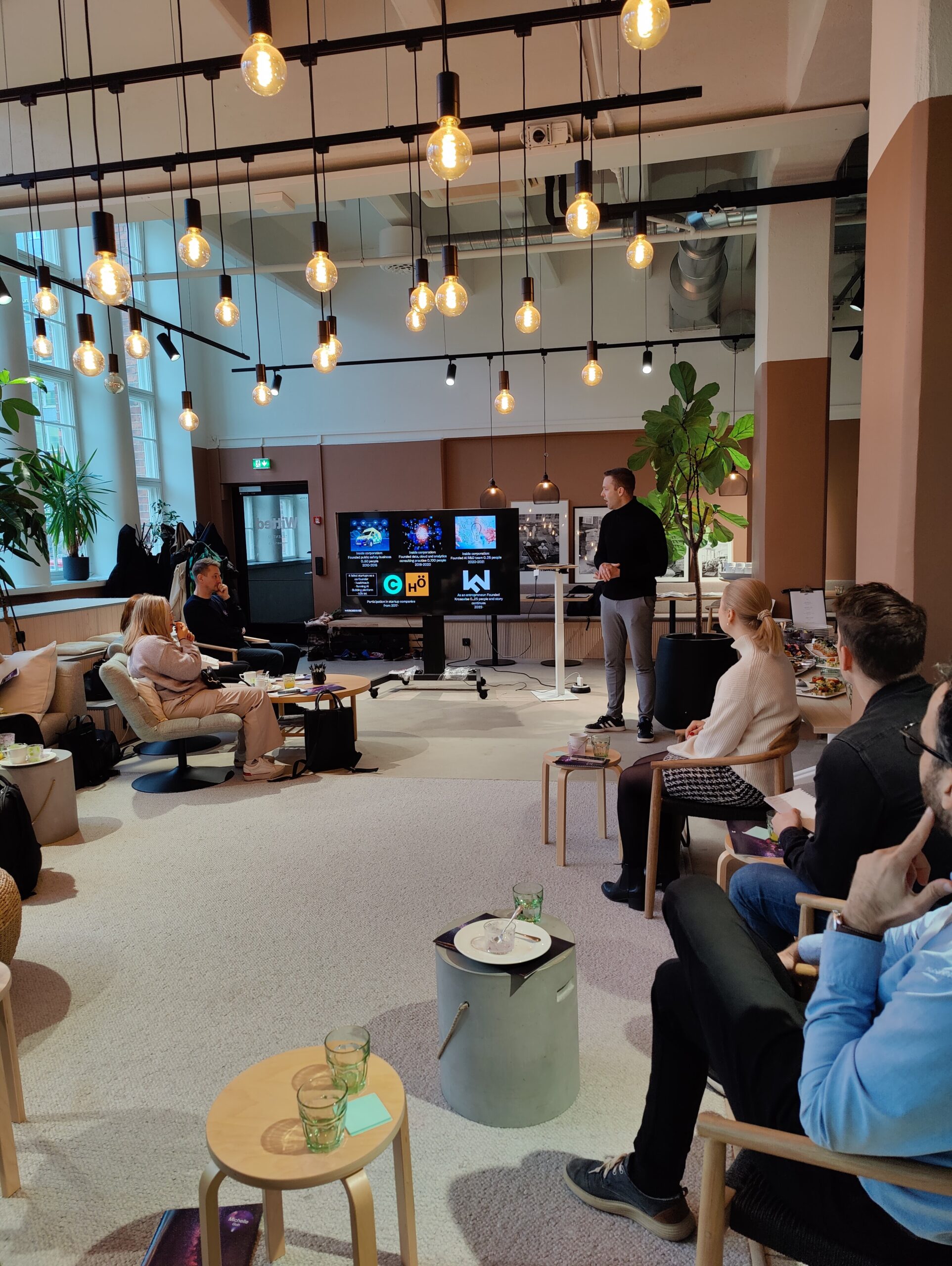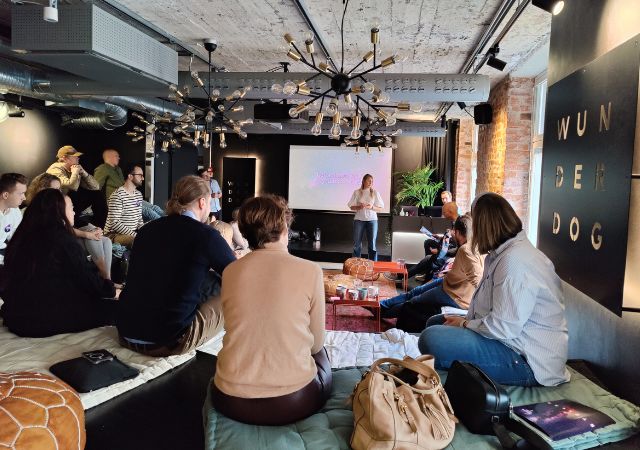Article
Building a thriving team – Throwback to Fusion Stellar session III

Team building is an art form that requires careful consideration of the right balance of expertise and interpersonal qualities, all fostered by a healthy company culture. The third Fusion Stellar program session explored these elements, offering practical insights on building a culture and team that maximizes the company’s future potential. In this article, we explore team-building strategies based on keynotes from the session, presented by seasoned professionals Salla Ibrahim, Matti Ristimäki, and Helene Auramo.
Leading the company culture
Company culture often dictates a team’s success. It begins to form from the actions and attitudes of the first team members, making the early decisions about who joins crucial. Salla Ibrahim, a renowned psychologist, business coach, and CEO/Co-Founder of Laavu Performance, initiated the session with a focus on the psychological foundations of culture.
“Culture equals the attitudes and behavior characteristics of a particular social group.”
This definition underscores the organic development of culture, influenced heavily by social norms rather than written rules. Salla outlined a structured approach to nurturing a positive culture that ensures that culture is not an afterthought but a central component of leadership:
- Becoming aware: Recognizing the existing dynamics and undercurrents within the team
- Defining the core values: Collaboratively establishing core values that resonate with all team members
- Hiring to cultural fit: Selecting new hires not just for skills but for alignment with these values and dynamics
- Leading with example: Demonstrating the values in everyday leadership actions
- Rewarding desired behaviors: Reinforcing the desired behaviors through recognition and rewards

Leading the culture is leading the psychological safety
In the end, leading the culture is all about creating an environment of trust. Psychological safety has been a hot topic for quite some time, but can be misunderstood if its definition is forgotten. Salla explains that psychological safety is not about never having any disagreements, being nice to everyone at all times and expressing only positive feelings, nor is it an umbrella that gives one the right to say whatever they want or avoid responsibility. What psychological safety in a group is about is the shared feeling that within this team, it’s safe to take interpersonal risks.
In a psychologically safe environment, individuals feel socially safe and are not afraid to share their raw ideas, ask defining questions, and address their concerns candidly. These features directly correlate with the team’s performance, innovativeness, well-being, and decision-making. On the other hand, when psychological safety is compromised, the fear of social rejection leads to shrinking the group who participate in decision-making and ideating, leading to inefficiency and lack of motivation.
Just like company culture, which is a key component of the state of psychological safety, psychological safety can be led and fostered by the leaders. With simple-sounding steps of changing the tone from knowing to learning, asking questions instead of telling others what to do, and admitting mistakes instead of aiming for perfection, the lead-by-example and positive reinforcement models work here as well.
Reverse-engineering a winning team
Matti Ristimäki, founder and CEO of Krosswise and 61N, brings an engineering perspective to the art of team building. He stresses the importance of assessing a variety of factors that contribute to an effective and balanced team. Matti’s approach is meticulous, focusing on the essential elements that form a resilient and dynamic team capable of driving a company’s success forward.
First, according to Matti, a startup’s key performance factors are its founders and team, funding and valuation, and business model and market. Of these three, the main focus should be on the people, as the other two are depending on them.
“Founding team combination defines the future potential of the company.”
To help define and find the right combination of founders, Matti used Krosswise’s founder canvas to illustrate the different qualities of the team members to consider. The canvas includes:
- Efficiency: their track record, achieved goals, and stress resiliency
- Commitment: what makes the candidate commit to the business, what is important to them, what is their risk resilience?
- Professional: their position and contribution to the business growth, level of expertise in their area
- Social equity: how extensive are their professional and customer networks?
- Team impact: the chemistry between other team members, unique value to the team, ways to handle conflicts
A well-rounded founding team should not only align in terms of efficiency and commitment but also complement each other’s professional skills and social networks. A shared narrative should tie together individual relations among founders to create a unified and cohesive team.
It’s important for founders to discuss and agree on fundamental principles together, such as their values, growth targets, exit strategies, and roles. These discussions help clarify the direction of the business and prepare the team for future scaling. What Matti highlights is the importance of continuously evaluating how well the current team and its individual members match the evolving phases of the company’s growth. Adaptability may require strategic replacements within the team to align with growth targets, including reconsidering one’s own position.
“The initial team members, typically the first 25, define the company’s potential,” Matti notes. As the team scales, consider not only the present expertise of the recruitment candidates but also their future potential. As the company grows, the challenge is to attract senior talent who can push the average competence level higher. This requires focusing on hiring professionals whose total expected value surpasses their current level, balancing the team’s skill set and cost structure effectively. To succeed in supporting professional growth, remember to discuss and agree on these with each team member:
- Their values
- Their expectations
- Their role, and their development target.
“The rest is all about culture building.”

Tying culture leadership and team building together: Helene Auramo’s 10 lessons on team building
As we have learned, building a thriving team is all about people: defining the work culture you want to foster and gathering a team of individuals who feed the culture with their interpersonal skills, values, and expertise. Helene Auramo, serial entrepreneur and CEO of Prönö, tied these elements together in her 10 lessons on team building:
- Don’t do it alone. Encourage collaboration and seek partners who complement and enhance your capabilities.
- Don’t do it with the wrong people. Ensure every team member shares the organization’s fundamental beliefs and goals. But to succeed in team building, you must first know who you are – identify your strengths and weaknesses.
- Ask for help. Utilize the skills and knowledge of others to overcome challenges more efficiently.
- Know where you’re heading. Have a clear understanding of the company’s direction.
- Be open and transparent. Open communication about current status and future objectives builds trust.
- Say you are sorry. Leaders should model accountability and humility; apologies can strengthen respect.
- Understand where your team members are heading. Ask and support each team member’s professional aspirations.
- Empower people. Foster an environment where team members can excel and innovate.
- Talk about values. Regular discussions about values integrate them into daily operations.
- It all takes more time than you think. Be patient.
To conclude, by focusing on strategic hiring, leadership by example, and the cultivation of psychological safety, leaders can develop teams that are not only effective in the short term but set for future success. These principles are essential for any organization aiming to excel in today’s competitive business landscape, ensure employee well-being, and engage talent for the long term.
The next Fusion Stellar throwback is all about exploring partnerships and ecosystems. While waiting for its publishing, familiarize yourself with the key takeaways from the previous Fusion Stellar throwbacks:
Get to know the stellar participants of the program:
- Venla Kiminki: From freelancing to building a business
- Giuseppe Coco: Exploring the entrepreneurial spirit
- Pauliina Nikola: From vision to reality: Pauliina’s path to purposeful career



